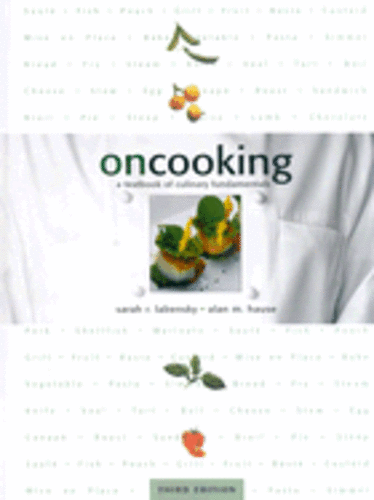

- CULINARY FUNDAMENTALS DAY 25 GENERATOR
- CULINARY FUNDAMENTALS DAY 25 FULL
- CULINARY FUNDAMENTALS DAY 25 PROFESSIONAL
- CULINARY FUNDAMENTALS DAY 25 SERIES
When current is sent through the coil it becomes magnetic.Įlectrician training comes with math and calculations, but they are mostly simple.
 This is a device made of a coil of conductive metal wire. In electrical work it is used to protect circuits, to keep the current contained within the circuit, and to protect people from electric shocks. An insulator is the opposite of a conductor. They come in many different forms, but basically generators run nearly all power grids by providing the electrical energy we all use.
This is a device made of a coil of conductive metal wire. In electrical work it is used to protect circuits, to keep the current contained within the circuit, and to protect people from electric shocks. An insulator is the opposite of a conductor. They come in many different forms, but basically generators run nearly all power grids by providing the electrical energy we all use. CULINARY FUNDAMENTALS DAY 25 GENERATOR
A generator changes mechanical energy into electrical energy.

This is a tool that can do it all: measure current, capacitance, resistance, voltage, frequency, and temperature. Your most useful tool in electrician training will be the all-purpose multimeter. Aluminum and copper are most commonly used. Metals are materials that conduct well and are considered conductors, which is why circuits are made of metal wires. A conductor is anything that will allow electrical current to flow through it.A clamp-on style ammeter can be used without disrupting the circuit.
CULINARY FUNDAMENTALS DAY 25 SERIES
With a traditional ammeter, current is measured by placing the ammeter in series in a circuit, which necessarily interrupts the circuit.
An ammeter is a tool that measures the amount of current in a circuit. It helps to know what some of these are before the first day, so you won’t feel lost. When you start your classes in trade school, electrician tools will be important for hands-on learning. This sometimes causes damage, but certainly wastes energy and is usually caused by poor insulation of the circuit. A short circuit is a fault in a circuit that causes current to take a different path. With loads connected in series, the amount of voltage through each one is different. 
In a series circuit, there is only one path for electrical current.
CULINARY FUNDAMENTALS DAY 25 FULL
Full voltage goes to each load connected in the circuit. In a parallel circuit, current can flow through multiple, parallel paths. Eventually, an overload will lead to overheating and damage to the circuit and components. Overload refers to the use of equipment in a circuit that exceeds its capacity and creates more current than the circuit can handle safely.
A circuit that has become overloaded is dangerous. Lights, motors, and transformers are just a few examples. A load is anything that uses up electrical energy. In electrician training, you will work with many loads. When a circuit is grounded it protects people from dangerous levels of current and voltage. The term also refers to the return path that electric current takes. Voltage is measured with respect to the ground. Also referred to as the Earth, the ground is a reference point. The fuse has to be replaced to get current going through the circuit again. When the current in the circuit gets too high, a strip of wire in the fuse melts and breaks the circuit. A fuse is a device that is used to interrupt the current in a circuit for reasons of safety. You won’t work much with DC current in electrical trade schools, as most modern circuits are AC. A direct current is a current that only flows in one direction through a circuit. This is a type of current that reverses direction with a regular pattern, usually several times per second. Here are some of the related terms you’ll want to know. A circuit is a path that a current of electrons flows through. Starting with the basics, electrician training means you will be learning all about electric circuits. Being prepared now means you will be ready to go on day one of classes. Getting a head start may also erase some of the anxiety you may feel over starting something new. If you haven’t started your program yet, you can get started by learning some of the more common technical terms that electricians use regularly.īy learning some of these terms now, you’ll make a good impression on your instructors and let them know you are serious about electrical trade school. As you get ready to start an electrician training program, you’re probably eager to learn your new trade right now. CULINARY FUNDAMENTALS DAY 25 PROFESSIONAL
All you need to get on the path to becoming a professional electrician is the right education. The number of jobs for electricians is growing every day and getting into this line of work is a smart move. This list will get you started with 25 important electrical terms. To prepare for your electrician education, it’s a great idea to get a head start on learning the important terms electricians need to use on the job. Electrician training is hands-on work, but it also requires some academic and book knowledge.








 0 kommentar(er)
0 kommentar(er)
